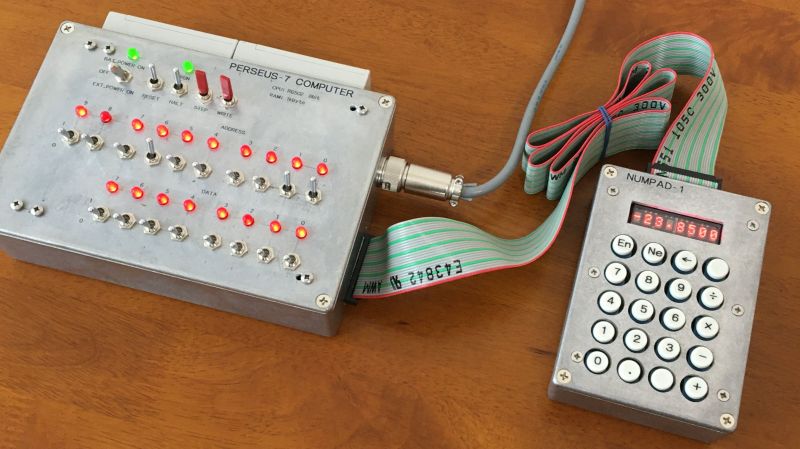[Mitsuru Yamada] states that one of the goals for this 6502 computer build was to make it strong enough to survive real-world usage. In that regard alone we’d call this a success; the die-cast aluminum enclosures used are a little blast from the past and lend a nice retro industrial look to the project. The main chassis of the computer fairly bristles with LEDs and chunky toggle switches for setting the data and address busses. The interior is no less tidy, with the 6502 microprocessor — date code from 1995 — and associated support chips neatly arranged on perf board. The construction method is wire wrapping, in keeping with the old-school look and feel. Even the hand-drawn schematic is a work of art — shades of [Forrest Mims].
As for programming, this machine is as low-level as it gets. Nothing but 6502 machine language here, entered manually with the toggle switches, or via an externally programmed ROM. The machine can only address 1k of memory, a limit which the code to support the RPN calculator add-on [Yamada] also built brushes up against, at 992 bytes. The calculator keypad has a 20-key matrix pad and an eight-digit dot-matrix LED display, and can do the four basic operations on fixed-point binary-coded decimal inputs. The brief video below shows the calculator in action.
We love the look of this build and we’re eager to see more like it. We’ve seen a ton of 6502 builds from discrete chips lately, and while we love those too, it’s nice to see one of the big old DIPs put back in action for a change.
















Shiny!
I think it will still be shiny 20 years from now
You mean to say, he wasted a whole eight bytes of memory. – Jokes.
“Less is More!”
-Lester Moore
Could use a 6507, if you could find one.
There’s one inside every Atari 2600 (almost always socketed), and in a few old Atari floppy drives too.
So there was a simplified 65xx series for game consoles and embedded controls. I found out from the data sheets.
Thanks to everyone who has seen the post. The latest advancements in electronic technology are great, but if you only follow the cutting edge, you’ll lose track of the basics. So I’m recreating the basics of microcomputers from the 1970s.
Now this is a project I would love to replicate, very well done!
Love the mid-century aesthetic, this has a real 1950s look to it. Sure it has 1970s LEDs, but if you were scraping together a system in the 70s, a 50s-looking case makes perfect sense. If I could find a suitable sized case with that crackle-black enamel stuff they liked in the 40s, I think I’d have to go for it. Would look pretty cool with nice diffuse yellow LEDs, or NE-2s.
I have published source code of the RPN calculator for this computer.